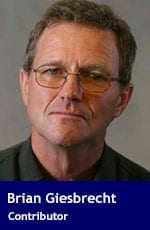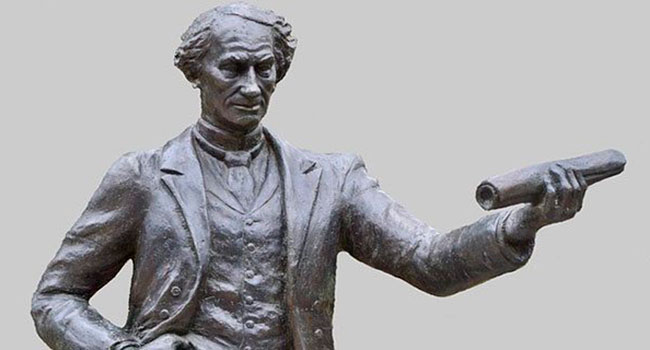 One of Canada’s best known historic heroes has taken quite a shellacking lately. John A. Macdonald’s statue was removed from a place of prominence in Victoria by order of its city council, and there have been calls elsewhere for buildings that honour his memory to be renamed.
One of Canada’s best known historic heroes has taken quite a shellacking lately. John A. Macdonald’s statue was removed from a place of prominence in Victoria by order of its city council, and there have been calls elsewhere for buildings that honour his memory to be renamed.
Even the city that once gloried in the fact that Macdonald was one of their own – Kingston, Ont. – appears ready to toss him over the side.
His crime – in the view of these demanding history renovators – is that he thought like a man of his time (and had a few personal faults in the bargain).
These history remakers are harsh judges. So it might be useful to see how some other historical heroes stand up when judged by these puritanical standards.
Why not start with one of Manitoba’s best-known heroes: Louis Riel. An odd modernistic statue and a more conventional one of Riel are in prominent places in Winnipeg. And the province commemorates Louis Riel Day every February.
But was he really a hero?
If those now judging Macdonald so harshly were given free rein to judge Riel, how would he do?
Likely, not so well. Some of Riel’s ideas were unusual, to say the least. He thought he was a prophet from God given a mission that included moving the Vatican to Canada with his friend, the local bishop, becoming the Pope, among many other bizarre examples. He believed he could foresee the future by ‘listening’ to his internal organs, and had a habit of tearing off his clothes and roaring like a bull. He also ate cooked blood.
Riel was an extremely odd man. In fact, he was once committed to a mental hospital. But at least he was a tolerant, open-minded man. Or was he?
Actually, no.
He planned to take land from the Indians for his Metis people. He believed that the Metis had a superior place in the pantheon of peoples. He was prepared to have those who didn’t accept his authority killed. He also did things that were considered noble at the time but are now denigrated. For instance, he taught at an Indian residential school in Montana. (His sister taught at an Indian residential school in Canada and insisted – as was the practice at the time – that the students speak only English.)
If Riel was judged by the people judging Macdonald, he would likely not stand up well at all.
But Riel did important things and so deserves his place in history. He had warts – just like Macdonald – but give the man his due. Let’s not tear down his statues because his 19th-century views are outdated and he had flaws. Acknowledge the flaws but celebrate the fact he’s important to us, as are Macdonald and other historical figures.
None was perfect and all of them thought like people of their time. Nellie McClung, so crucial to the advancement of women’s rights, issued anti-Semitic ramblings and advocated forced sterilization for poor immigrant girls considered “subnormal.” Another creature of her time, she was flawed but is still entitled to her place in history.
A statue of Chief Peguis has stood in Kildonan Park in Winnipeg for years. Was the man perfect?
He came from a tribe that took slaves. He had many wives, all of whom he treated miserably by today’s standards. His tribe was in constant warfare with rival tribes, particularly the Sioux. They took captives, who did not fare well at all. By today’s standards, Peguis would be judged a misogynistic, warmongering racist.
But again, he did some very important things for his people and for all of us. If not for his help, the early settlers to this unforgiving cold land might not have made it through their first winter. For that, he’s entitled to his place of honour in that lovely park.
Macdonald and other notables of his generation deserve better treatment than what’s being accorded to them by today‘s gangs of myopic minor politicians.
Those who judge yesterday’s people by the standards of today – and by standards that demand perfection – will find no one to honour.
Brian Giesbrecht is a retired judge and a senior fellow at the Frontier Centre for Public Policy.
The views, opinions and positions expressed by columnists and contributors are the author’s alone. They do not inherently or expressly reflect the views, opinions and/or positions of our publication.

